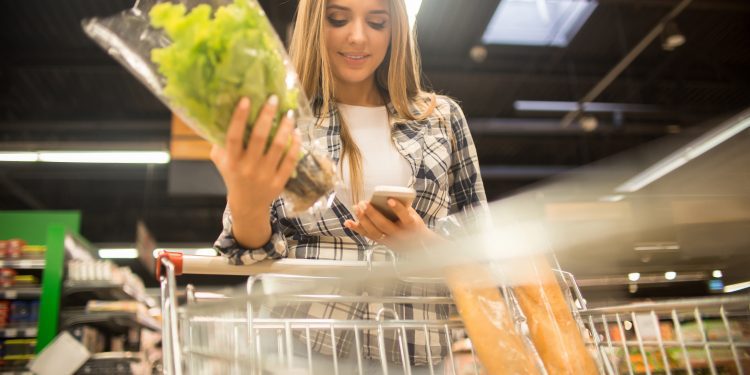The final stage of any grocery shopping trip, the checkout process, has long been a significant pain point for many consumers. Extended wait times, inefficiencies, and the occasional system malfunction often transform a simple shopping trip into an unexpectedly frustrating ordeal that negatively impacts the customer experience.
However, technology has made the overall experience more streamlined. As the space continues to evolve, tech will continue to play a crucial role at checkout. Let’s explore the innovative solutions that are revolutionizing the grocery sector:
Self-checkout kiosks
Self-checkout kiosks or counters allow grocery shoppers to scan and pay for their items without the assistance of a cashier. More grocery stores, including Whole Foods and Wegmans, are equipping their locations with self-checkouts that not only cut down on lines, but also help streamline the overall process.
While self-checkout kiosks are not fully taking over these stores—at least not yet—there is that layer of convenience and choice that’s been increasing among many retailers. And we expect to see more retailers hop on the self-checkout bandwagon as automation continues to play a pivotal role in the space.
Smart Shopping Carts
Smart carts use computer vision artificial intelligence (AI) to identify products and update the total as they are added, which makes it possible to integrate instant in-cart payments.
Current advancements in internet of things (IoT) technology even enable retailers to transform traditional shopping carts into smart carts by simply adding on a clip-on attachment. This particular approach offers multiple benefits including faster implementation times, cost-effectiveness, and a smoother transition for both customers and staff.
At the moment, many grocery chains are still in the experimental phase of smart shopping carts. Albertson’s, for example, is working to roll out these innovative carts within a few of its stores. The retailer is working with Veeve on the initiative, who’s also collaborated with companies such as Kroger and Safeway.
Mobile Payment Apps
Mobile payment apps aren’t new, but they have gotten more sophisticated over the years. By leveraging their mobile devices, shoppers can scan items and complete payments right through their smartphones with just a few clicks.
Kroger is a prime example of a retailer that has long seen the opportunity mobile presents. The company has worked to enhance the customer shopping experience through its Scan, Bag, Go app, which allows customers to control their entire shopping journey, from item selection to payment, all through their mobile device. The application offers features such as digital coupon downloads for scanned items and a real-time shopping total to help customers maintain their budget.
Click and Collect
The order and pickup model (also known as BOPIS or buy online, pickup in store) allows customers to browse and order their entire grocery list from the comfort of their home, and then swing by the store to pick up their items at a convenient time.
This system effectively eliminates the grocery checkout process, and removes the need for standing in lines or navigating crowded store aisles. For retailers, this model can translate into increased sales volume and reduced overhead costs associated with in-store shopping.
Online grocery giant Instacart has revolutionized the way many shop for groceries. Not only did the company see a sudden uptick in sales during the pandemic, but this behavior has stuck. While a big portion of its business focuses on grocery deliveries, Instacart also allows consumers to order goods via the app and then pick it up in-store once they’re ready.
Computer Vision & Biometrics
This innovative technology leverages cameras and sensors installed across the store to track customer actions and the products they select. It even enables customers to pick their desired items and walk right out of the store, bypassing traditional checkout counters entirely.
Amazon has leveraged this technology within its Amazon Go stores to provide a “just walk out” shopping experience. Shoppers can grab everything they need—from freshly brewed coffee to local baked goods—and simply exit the store, with their account charged.
The e-commerce giant continues to bet on similar biometric technology, most recently introducing Amazon One, a contactless payment method that lets consumers pay for goods via the palm of their hand—further pushing the boundaries of contactless technology in retail.
Final Thoughts
There’s no doubt that technological and operational advancements are enhancing the checkout process. As the retail landscape continues to evolve, these innovative solutions are not only enhancing the shopping experience for consumers, but also offering new operational efficiencies for retailers—whether it is delivering more personalized experiences or gathering insights from customer data.










